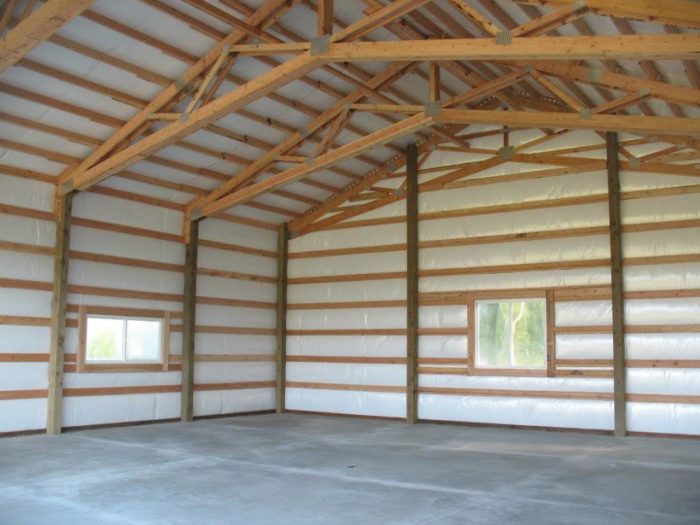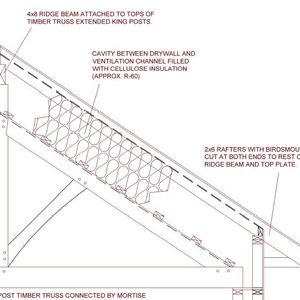
Kevin is working up the design for a new lakeside cabin in Tennessee, with plans currently calling for a scissor-truss roof and a vaulted ceiling over the kitchen and living area. He wants a trouble-free roof assembly, but local advice on insulation and air sealing has been hard to find.
The roof starts with scissor trusses set on 8-foot centers. Between them, running horizontally, Kevin would run 2x6s on 24-inch centers (the 2x6s set on edge), and insulate the bays with fiberglass batt insulation. The bottom of the 2x6s would be covered with tongue-and-groove pine boards. On top, he’d start with OSB sheathing, then add 2 inches of rigid foam insulation, a layer of 1/2-inch plywood, then foil bubble wrap and, finally, metal roofing.
He’s ruled out the use of structural insulated panels (SIPs).
“There doesn’t seem to be anyone around here, in southern Kentucky, that cares much about good insulation and sealed houses,” Kevin writes in a Q&A post. “I don’t have any education other than applying different parts of roofing projects I have seen online and what I have seen in person. Please point out problems with this idea or a better way.”
That’s the topic for this Q&A Spotlight.
This plan has some problems
GBA editor Martin Holladay responded to Kevin’s question before Kevin had fully explained his plan to install rigid foam above the roof sheathing. Based on Kevin’s description of fiberglass batts installed between the 2x6s, Holladay noted a glaring weakness in plans: the lack of an uninterrupted air barrier in the ceiling.
“You absolutely need an airtight ceiling to prevent interior moisture from entering your roof assembly and causing moisture problems,” Holladay writes. “That means (a) You can’t…
Weekly Newsletter
Get building science and energy efficiency advice, plus special offers, in your inbox.

This article is only available to GBA Prime Members
Sign up for a free trial and get instant access to this article as well as GBA’s complete library of premium articles and construction details.
Start Free TrialAlready a member? Log in












3 Comments
Above Sheathing Venting
The article linked to support above sheathing venting shows its effects when used under stone-coated metal shakes. There is no mention of its benefits in general, or under any other materials.
Response to Malcolm Taylor
This GBA page contains lots of links, and I wasn't sure at first what article you were talking about. After some investigation, I concluded that you were talking about the link provided by GBA reader Jon R in the last paragraph of the section under the heading, "Combining fiberglass and rigid foam."
For any confused GBA readers, here is the link: "The Impact of Above-Sheathing Ventilation on the Thermal and Moisture Performance of Steep-Slope Residential Roofs and Attics."
Martin
I should have been a lot more specific. Thanks.
Log in or become a member to post a comment.
Sign up Log in